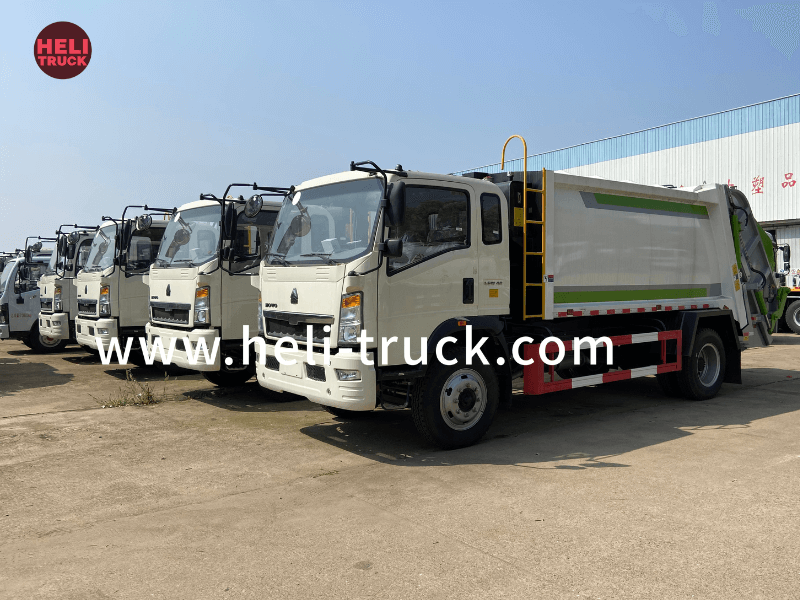Introduction
Waste management is a critical aspect of urban infrastructure and public health. As cities continue to grow and populations increase, the need for efficient and effective waste disposal methods becomes more pressing. Garbage compactor trucks play a vital role in modern waste management systems, helping to collect, transport, and compact solid waste for disposal.
This article aims to provide a thorough exploration of garbage compactor truck technology, including its history, design, operation, benefits, and future developments. By understanding the intricacies of this essential technology, we can appreciate its significance in keeping our cities clean and sustainable.
History of Garbage Compactor Trucks
The concept of compacting waste for efficient disposal dates back centuries. Early civilizations used rudimentary methods to compress and transport waste, such as pushing it into pits or burying it in designated areas. However, the modern garbage compactor truck as we know it today has evolved significantly over the years.
The first mechanical compactor trucks appeared in the early 20th century, revolutionizing waste collection and disposal processes. These early models featured hydraulic compactors that could compress solid waste, reducing its volume and facilitating transportation. As technology advanced, compactor trucks became more sophisticated, incorporating automated loading systems, compaction mechanisms, and safety features.
Design and Components of Garbage Compactor Trucks
Modern garbage compactor trucks are designed to optimize waste collection and disposal operations. These specialized vehicles consist of various components that work together to efficiently manage solid waste. The key elements of a typical garbage compactor truck include:
1. Chassis: The chassis serves as the structural framework of the vehicle, providing support for the compactor unit and storage compartments.
2. Compactor Unit: The compactor unit is the heart of the garbage truck, responsible for compacting solid waste to reduce its volume. This unit typically consists of a hydraulic press or blade that compresses the waste inside the truck's body.
3. Body: The body of the compactor truck houses the compacted waste and includes storage compartments for different types of waste materials.
4. Loading Mechanism: Garbage compactor trucks are equipped with loading mechanisms, such as a hydraulic arm or hopper, to lift and load waste into the truck's body.
5. check : Modern compactor trucks feature advanced control systems that allow operators to monitor and adjust compaction settings, loading processes, and safety functions.
Operation of Garbage Compactor Trucks
Garbage compactor trucks follow a systematic process for collecting, compacting, and disposing of solid waste. The operational workflow of a typical compactor truck is as follows:
1. Waste Collection: The compactor truck arrives at designated collection points, such as residential neighborhoods, commercial areas, or industrial sites, to collect solid waste.
2. Loading: The truck's loading mechanism, such as a hydraulic arm or hopper, lifts and deposits waste into the body of the truck.
3. Compaction: Once the waste is loaded, the compactor unit activates to compress the waste, reducing its volume and maximizing storage capacity.

4. Transport: After compaction, the garbage truck transports the compacted waste to designated disposal sites, such as landfills, recycling facilities, or composting centers.
5. Disposal: At the disposal site, the truck unloads the compacted waste, either through tipping the body or using a specialized unloading mechanism.
Benefits of Garbage Compactor Trucks
Garbage compactor trucks offer a range of benefits that make them indispensable in modern waste management systems. Some of the key advantages of using compactor trucks include:
1. Efficiency: By compacting waste on-site, compactor trucks can collect and transport larger volumes of waste in fewer trips, reducing fuel consumption and operational costs.
2. Space Optimization: Compacted waste takes up less space, allowing for higher storage capacity and minimizing the need for frequent disposal trips.
3. Improved Hygiene: Compactor trucks help contain and manage odors, leakages, and pests associated with solid waste, contributing to a cleaner and healthier environment.
4. Environmental Sustainability: Proper waste compaction and disposal reduce the environmental impact of solid waste, promoting recycling, composting, and resource recovery.
Future Developments in Garbage Compactor Truck Technology
As technology continues to advance, the future of garbage compactor trucks looks promising with several innovative developments on the horizon. Some of the key trends and advancements shaping the future of compactor truck technology include:
1. Smart Sensors and IoT Integration: Garbage compactor trucks are increasingly being equipped with smart sensors and Internet of Things (IoT) technology to monitor waste levels, compaction efficiency, and operational performance in real-time.
2. Automated Systems: The integration of automation and robotics in compactor trucks is streamlining waste collection and compaction processes, enhancing efficiency and reducing human intervention.
3. Alternative Power Sources: The adoption of alternative power sources, such as electric or hybrid engines, in garbage compactor trucks is reducing emissions and promoting sustainability in waste management operations.
4. Data Analytics and Predictive Maintenance: Advanced data analytics and predictive maintenance systems are being used to optimize compactor truck performance, prevent breakdowns, and prolong the lifespan of critical components.
Conclusion
Garbage compactor trucks play a crucial role in modern waste management systems, offering an efficient and effective solution for collecting, compacting, and disposing of solid waste. By understanding the history, design, operation, benefits, and future developments of compactor truck technology, we can appreciate the significance of this essential equipment in maintaining clean and sustainable cities.
As technology continues to evolve, garbage compactor trucks will undoubtedly undergo further innovations and improvements to meet the growing demands of urban waste management. By embracing these advancements and leveraging cutting-edge solutions, we can pave the way for a more sustainable and environmentally-friendly approach to waste disposal in the years to come.
